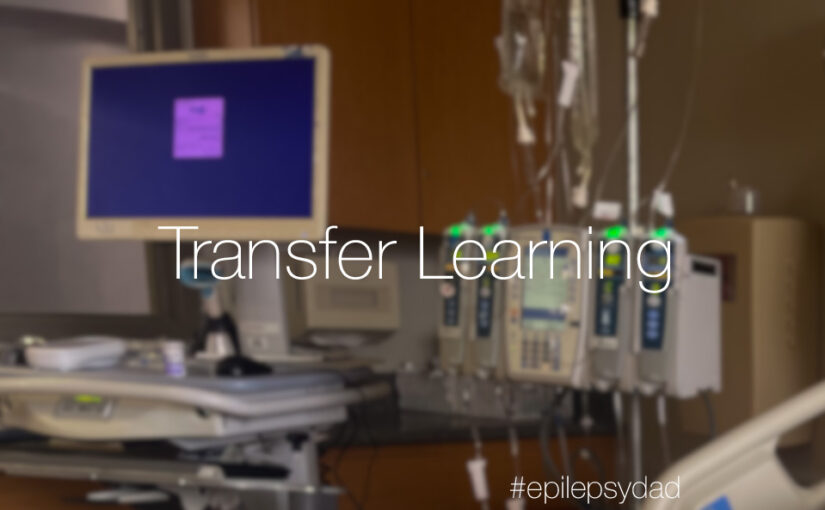The sound of a seizure woke us. Normally, they only last a few seconds in the morning, but this was louder, longer, and more intense. We rushed into our son’s bedroom and saw his body rigid, his head turned, and saw the rhythmic pulses of the seizure gripping him. We held him and cleared the drool from his mouth. I grabbed the magnet for his VNS, handed it to my wife, and ran to get the rescue meds. Swiping the magnet did nothing, nor did the first dose of rescue medication. I wasn’t sure if it was because we did it wrong since this was the first time we used the nasal delivery, but we grabbed a second dose and gave it to him. A few minutes later, his body started to relax.
I grabbed my phone so we could lay in bed with him and saw that I had a number of calls overnight. I listened to the voicemails, and they were from the assisted living facility my parents live in. My mother had a fall and was rushed to the hospital.
I called my father, who didn’t have many more details. His memory is fading, but he knew that she had fallen and the staff had called for an ambulance.
I called the hospital to get the details. Eventually, a nurse returned my call and said that my mother had a stroke and was recovering in the ICU.
I checked my watch. It was only 8 AM.
Good morning to you, too.
My wife took care of our son so that I could go to my mother. When I got to the hospital, my body went on autopilot. This wasn’t the first time I had to rush to the hospital after receiving a call. It was a regular occurrence in the early years of my son’s epilepsy. My wife would call and let me know they were on their way to the emergency room, and I would stop what I was doing and head to the hospital to meet them.
Walk in the door. Hand the check-in desk my driver’s license and get my visitor pass. Get the room number and directions. Hallways. Elevators. More hallways. Nurse’s station. Room.
There is a technique in artificial intelligence called “transfer learning,” where an algorithm trained to do one task is repurposed for another related task. My hospital process trained for the children’s hospital worked perfectly. The only difference this time was that the patients I passed were adults, but the routine transferred perfectly to this new environment.
When I saw my mother, it was very similar to the postictal state my son would be in after an intense seizure. The disconnect between the brain and the body as everything came back online caused a loss of understanding, a loss of language, and involuntary motor movements. The same patience we used with our son helped me understand that when my mother said, “I am cold,” it meant, “I want to be cold,” because she was covered in blankets.
Throughout the day, she continued to improve, and by that evening, she was able to communicate more easily. When I returned the next morning, she was out of bed and sitting in a chair, and her language skills were much improved. Like my son, after he had a seizure, she didn’t remember many details or that I was there the entire day.
I have a lot of practice sitting at a bedside in a hospital. I have a lot of experience watching a loved one in a scary situation. While I am grateful that the experience helps me stay present and responsible, I would much rather have experience doing almost anything else.

Dave,
I’m so sorry your son had such a strong seizure. I hope he is okay and although I know there seems to be no rhyme or reason when seizures happen, I hope you find a clue. As they say when it rains it pours, I know as my parents are aging and are going down that road. I hope your mother is recovering well. After five years of going down the path you are going, I always carry resucue meds wherever I go, you just never know. It never gets easier either. You and your wife are strong and your son is lucky despite his illness. I hope your son will not have another for a while, hope and strenght to you.
You’re right, you just never know. Thank you for your kind comment, Vivian. ~Dave